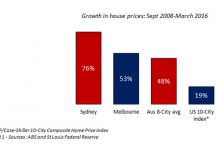Given all the shenanigans recently of what has happened with Barclays et al, many people have asked me to explain exactly what LIBOR is and why it affects us all. So, here goes.
What does LIBOR stand for?
LIBOR stands for London Inter Bank Offered Rate
What is Libor and how is it worked out?
This is basically how much banks have to pay to borrow from other banks.
Each and every day, it is calculated by the British Bankers’ Association from estimates given by the major banks of the cost of their own inter-bank lending.
Each bank has to pay a rate that is a reflection of how their rivals’ perceive its financial strength to be. In other words, how much it can be trusted to pay any loan back.
Every day sixteen banks put in the interest rate that they are charged to borrow money. The four highest rates and the four lowest rates are not taken into account. The average of the eight remaining bank rates is then worked out to give the LIBOR rate.
The reality of it is that the higher the interest a bank has to pay to borrow funds, the less confidence the lending bank has in it.
The reason so many people place such great value in LIBOR is that this then gives an indication of the health of the wider banking sector. LIBOR does have a European equivalent called Euribor.
Why do banks have to lend to each other?
For the same reason as most lenders do, i.e. make a profit. The borrower needs the money to guard against any potential any short-term cash problems.
To explain this further, a bank may find that at the end of a certain day more customers have made withdrawals than deposits. This is not healthy for the books and so it borrows from its rivals to cover the difference.
When the shoe is on the other foot, banks which have a cash surplus can make extra money (profit) by lending to a competitor. The average rate of interest paid by the banks in such inter-bank lending and borrowing is called the LIBOR.
Why is Libor considered to be so vital?
The Financial Services Authority (FSA) says Libor and Euribor are both, “benchmark reference rates fundamental to the operation of both UK and international financial markets”. Put another way, there is nothing else in place which is as good. However, given the recent debacle, people are working on this.
The price of millions of financial transactions made every day all over the world are set according to LIBOR.
According to the British Bankers Association, financial swap deals worth GBP225 trillion are indexed to LIBOR as are another GBP6.4 trillion in loans.
How can LIBOR affect a mortgage?
Some mortgages are actually linked to LIBOR. Even those that are not directly involved with it, LIBOR is used by banks to help set the interest rates that they charge their own customers.
The LIBOR rate is considered to be very important as it is followed much more closely by the banks than any rates set by the Bank of England, due to the fact the LIBOR rate is thought to be a far more accurate appraisal of real world circumstances.
What happened at Barclays and how can it affect the man on the street?
Barclays submitted misleading figures for the inter-bank borrowings they made.
To begin with, between 2005 and 2008 – and sometimes working in cahoots with traders at other banks – they tried to influence the LIBOR rate – so as to try to increase their profits.
Then, between 2007 and 2009, when the Global Financial Crisis was at its peak, Barclays lodged artificially low figures. The reason for this is that they wanted to try and hide the problems they were suffering from.
As you will have ascertained from the above, LIBOR is calculated by what the banks tell the British Bankers’ Association their own interbank lending rates are.
If there is a change in that main rate it could pass down through the financial system to make loans, mortgages or credit card interest rates more expensive or, conversely, cheaper.
Conclusions
Invariably, the politicians have now got involved and that is clouding the issue (as only they can do!). There seems little doubt that Barclays succeeded in lowering the Libor rate. Although the British FSA was dubious to start with, it does seem that the US Department of Justice is right when they said that “on some occasions the actions of Barclays’ staff did affect the rate”.
There is an ongoing investigation across the banking industry. Without doubt more information will come to light. Once this happens then policy can be formulated to try and prevent this happening again.
| The above data and research was compiled from sources believed to be reliable. However, neither MBMG International Ltd nor its officers can accept any liability for any errors or omissions in the above article nor bear any responsibility for any losses achieved as a result of any actions taken or not taken as a consequence of reading the above article. For more information please contact Graham Macdonald on [email protected] |




